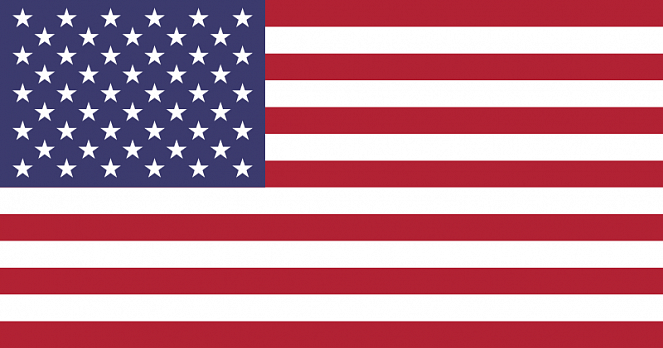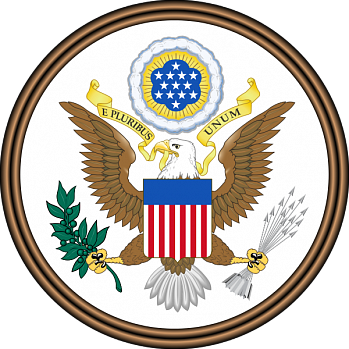 Соединенные Штаты Америки (США)
Соединенные Штаты Америки (США)
Comment by the Information and Press Department on US attempts to distort Russian approaches to investigating the use of chemical weapons in Syria
On January 9, the US delegation circulated an unofficial document, “Assessment of the Russian Federation's Positions Regarding the Use of Chemical Weapons in Syria”, at the UN Security Council with US assessments of Russia’s stance regarding the use of chemical weapons and toxic chemicals in Syria. Having studied it, we are compelled to state that this document bears no resemblance to reality and completely distorts our country's approaches to investigating such incidents.
Unfortunately, in this document, our US colleagues have stooped to outright distortions of the facts. It appears that they didn’t give a second thought to the substance of their far-fetched allegations either from the standpoint of professional ethics or basic common sense. The real state of affairs in the investigation by the Organisation for the Prohibition of Chemical Weapons (OPCW) and the UN of continuing incidents involving extremists using toxic chemicals and full-fledged chemical warfare agents in Syria has been distorted.
Therefore, we cannot regard the document prepared by the United States as anything other than an attempt to mislead readers. Especially considering that the Russian position on the chemical incident on April 4, 2017 in the Syrian town of Khan Sheikhoun, based on professional findings of specialists, was clearly and thoroughly described in the materials of a joint press conference of representatives of the Foreign Ministry, the Defence Ministry and the Ministry of Industry and Trade of Russia.
In order of priority of the claims brought against Russia by the United States, we would like to focus on the following.
1. Not a single Russian official has ever unequivocally stated that sarin used in Khan Sheikhoun was brought from Iraq or Libya.
Over the past several years, Russia, together with China, has consistently tried to draw the attention of the international community to continuing cases of chemical terrorism in the Middle East, and to push for the adoption of a UN Security Council resolution condemning these barbarous crimes in Syria and Iraq. However, each time these proposals were met with strong opposition from our Western partners who are permanent members of the Council, who prefer to accuse the lawful Syrian government of using chemical weapons without providing any proof thereof.
Russia has regularly called for conducting objective and professional investigations into incidents involving the use of poisonous and toxic substances as weapons. We have insisted on studying all scenarios of events without exception, strictly observing the procedure for preserving material evidence, establishing causal relations, and comparing the composition of chemicals and delivery channels, including in the context of signals coming from Syria about illegal imports of components for making chemical weapons.
With regard to Libya’s chemical arsenals, we know even from open sources that in 2011 a number of artillery shells with chemical warfare agents disappeared from Rabta chemical weapons storage facility, some of which were subsequently used during inter-tribal clashes.
With regard to chemical weapons in Iraq, all questions on this matter should primarily be addressed to the United States and Great Britain, which have undertaken to destroy several thousand of such munitions in that country in 2003-2009 without proper international control and in violation of the provisions of the Convention on the Prohibition of Chemical Weapons (CWC). Instead of making groundless accusations against other states, Washington and London should have provided the OPCW with exhaustive information about these unauthorised activities and handed over the samples of poisonous substances that were eliminated in Iraq in order to conduct their comparative analysis with samples taken at the scene of the incidents in Syria.
2. The Syrian authorities have repeatedly and persistently invited experts from the OPCW Fact-Finding Mission to investigate possible use of chemical weapons in Syria (FFM) and the OPCW-UN Joint Investigative Mechanism (JIM) to visit Khan Sheikhoun and Shairat air base for proper investigative measures.
The day after the incident in Khan Sheikhoun, the US side requested that we assist in obtaining the Syrian authorities’ permission for an OPCW inspection at Shairat air base where, Washington claimed, sarin allegedly used by the Syrian Air Force was stored. Damascus immediately gave permission but it was not used. Instead, on the night of April 7, 2017 in breach of the UN Charter and basic principles of international law, the United States committed an act of aggression against a sovereign state by launching a massive rocket strike on Shairat.
On April 11, 2017, the Government of Syria, in an official letter to Director-General of the OPCW Technical Secretariat Ahmet Uzumcu, requested that OPCW experts be sent to Khan Sheikhoun and Shairat to investigate all the circumstances of the incident. As Head of the UN Department of Safety and Security Peter Drennan confirmed later, all necessary guarantees were obtained for OPCW experts’ visit to Khan Sheikhoun from the armed opposition that controlled it. As for Shairat, there were no obstacles whatsoever to a trip to the base.
Nevertheless, neither FFM representatives, nor JIM experts paid a visit to Khan Sheikhoun. Only half a year later did a JIM team visit Shairat just to question its staff, verify Syrian Air Force flight records and study aircraft bomb suspension devices on SU-22 planes. The JIM experts did not even try to collect samples for tests for the presence of sarin, which could, once and for all, either confirm or refute the US version of the Khan Sheikhoun incident. The impression was that they were not the least interested in establishing the truth.
Our US colleagues insist that after the samples collected by supporters of the Syrian authorities in Khan Sheikhoun and tested at the OPCW revealed the presence of admixtures allegedly characteristic only of Syria’s former chemical weapons programme, the question of whether a trip by international experts to the scene of the incident was expedient was altogether dropped. Using this strange logic, it would seem that the Government of Syria deliberately put its people at risk in a terrorist-controlled area in order to procure evidence of its own guilt.
3. The final report of the OPCW Fact Finding Mission on Khan Sheikhoun, which the OPCW-UN Joint Investigative Mechanism largely relied on in its further work, directly acknowledges that this special OPCW mission could not fully guarantee the security of samples received from the Syrian opposition according to procedures required by the Chemical Weapons Convention.
We agree only with US the conclusion that the Khan Sheikhoun incident is not an exception in terms of how investigations are run. The FFM and JIM relied on the same misguided practice, fundamentally contradicting CWC provisions, in carrying out other investigations. Does not this explicit conclusion by the United States suggest that the so-called Syrian “chemical dossier” has been controversial from the start?
Moreover, the FFM’s unsubstantiated refusal to visit the accident site deprived its experts of the opportunity to talk to many real witnesses and victims, investigate the explosion crater and collect evidence. As a result, the special mission mostly had to rely on falsified “evidence” and dubious records that were received from opposition groups and non-governmental organisations affiliated with them, often defying basic common sense.
It is evident that in these circumstances we cannot expect any impartiality.
4. Following a laboratory analysis of the samples taken by the Syrian authorities from the blast crater in Khan Sheikhoun with much difficulty and risk, Russia had no doubts about the fact that sarin was used there. However, there were serious doubts about JIM’s conclusions concerning the way sarin was delivered and used.
As for specific traces of DF and hexamine in the Khan Sheikhoun samples that are allegedly typical of sarin produced under the former Syrian military chemical programme, we can say the following.
Russia so far has not received an answer to the question of whether the tests for the presence of possible microscopic traces discovered during the investigation due to the high sensitivity of the equipment were carried out in any other process where DF is used as a primary component for making sarin and if there are any scientific data to this effect. Without such information no explicit conclusions can be made.
In addition, after Syria joined the CWC, Damascus sent to the OPCW Technical Secretariat detailed information on the methods of making “Syrian” sarin, and a portion of the precursors for that substance was destroyed aboard the US Cape Ray based in the Mediterranean Sea. So, the recipe of Syria-made sarin has been no secret for a long time and could easily be used with the aim of organising another more elaborate provocation in Khan Sheikhoun.
5. It is noteworthy that both OPCW Fact Finding Mission segments were led by British subjects. Among nine people on the staff of the OPCW FFM, six represented NATO member states and one – a partner of NATO.
This can hardly be called “broad” geographic representation “from many continents,” as the US document reads. At the same time, Russia has never doubted the qualification of the experts chosen for the OPCW FFM and has only demanded compliance with basic UN rules, which would facilitate an objective investigation.
6. Since April 2017, we have repeatedly and thoroughly made the case that the chemical incident in Khan Sheikhoun may have been staged. These materials were spread as official documents of the UN Security Council and General Assembly, as well as at the OPCW.
Unfortunately, as the seventh report made by the OPCW Joint Investigative Mechanism in October 2017 showed, the JIM has not even begun seriously looking into whether the events in Khan Sheikhoun were the result of a staged provocation.
Meanwhile, many respected specialists from various countries have suggested the same.
It is noteworthy that some anonymous explosives experts the JIM hired for this investigation mistook a piece of pipe for an element of a chemical aerial bomb, despite the fact that there was no real evidence of an air strike in Khan Sheikhoun. However, it was probably planted on the blast site or was a part of the sarin container, which was exploded on the ground surface with an explosive device to imitate an air strike.
To prove the alleged chemical attack in Khan Sheikhoun, the US representatives use pieces of air ammunition the OPCW FFM received from militants and quote the report stating that the pieces had traces of “Syrian” sarin. However, it is noteworthy that these objects only appeared in autumn 2017.
To put it differently, the special mission experts have probably ordered pieces of a “chemical” bomb from the armed Syrian opposition, and it took the militants almost half a year to carry out this task. Despite such a long period, there still were some glitches, which was unfortunate for those who spread allegations about the “chemical crimes” of the Syrian authorities.
So, after the Russian experts examined photos of the fragments presented in the OPCW Fact Finding Mission report, it turned out that the overwhelming majority of them are just parts of simple aerial bombs from the arsenal of the Syrian Air Force. Moreover, the traces of severe corrosion clearly visible on the photos suggest that they were used at least five years ago. Other metal objects presented in the photos, like the deformed water pipe from Khan Sheikhoun, have absolutely nothing to do with airborne armament.
As for the flight of the Syrian Su-22 aircraft near Khan Sheikhoun, it should be recalled that the relevant objective control data graphically presented in the materials of the joint news conference of representatives of the Ministry of Foreign Affairs, the Ministry of Defence and the Ministry of Industry and Trade of Russia was first made public by Washington as an attempt to justify its missile strike at Shayrat air base. In accordance with these data and the conclusions of the Joint Investigative Mechanism’s seventh report, the aircraft did not approach Khan Sheikhoun closer than 5 km, and flew perpendicular to the place of the chemical incident that was on the opposite side of the town, that is, in total at a distance of not less than 10 km.
Consequently, the question arises: How, under such circumstances, could an uncontrolled aerial bomb be at the scene of the incident? We did not find any explanations for this either in the documents of the OPCW Fact Finding Mission and the Joint Investigative Mechanism, or from our American colleagues.
7. It simply does not make any sense for the Syrian army, which is winning, to use chemical munitions in isolated instances to gain, according to the US, an advantage in local armed clashes, while inviting a harsh response from the international community.
Attempts to impose responsibility on Damascus are devoid of any logic. At the same time, in the face of the undeniable military successes of government forces, such provocations offer a last hope for the terrorists, who are being defeated, and their supporters.
To sum up, once again we call on our partners in the UN Security Council to show common sense and objectively assess the US attempts to impose on the international community a false understanding of who is responsible for chemical incidents in Syria.






